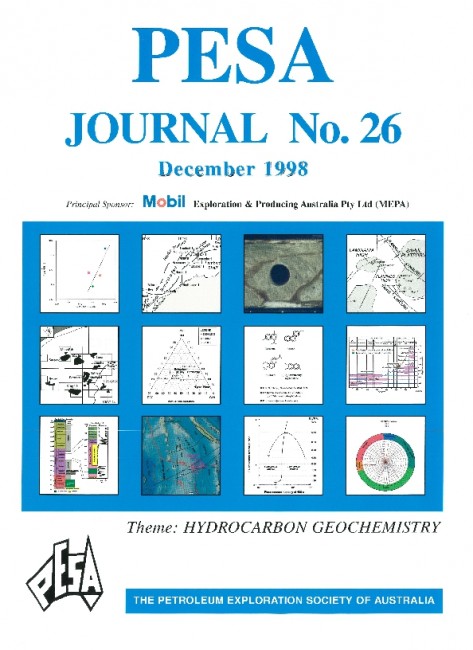Publication Name: PESA Journal No. 26
Authors: John D. Gorter and Birgitta Hartung-Kagi
Publication Volume: 26
Date Published: December 1998
Number of Pages: 16
Reference Type: Journal Article
Abstract:
The occurrence of migrated hydrocarbons in lithologiestraditionally thought of as being impermeable to invasion by
hydrocarbons, that is, cap rocks or interbedded nonreservoir
shales, has the potential for misinterpretation of
source facies. Supersaturation of the cap rock over gascondensate
and light oil accumulations, and of fine-grained
clastics interbedded with reservoir sandstones within those
accumulations, can lead to erroneous interpretation of the
fine-grained clastics as the source rocks of the accumulated
hydrocarbons. Given geological time, even fine-grained
lithologies are permeable, and with light oils and
condensates this permeability is likely to have allowed
invasion of hydrocarbons. These migrated hydrocarbons
can lead to misidentification of source rocks, particularly if
the presence of these migrated hydrocarbons is unsuspected
or ignored.
Use of the Quantitative Fluorescence Technique (QFT,
Delaune, 1992) in Bayu 1, Bonaparte Basin showed that
migrated hydrocarbons were trapped high above the
conventional sandstone reservoir lithologies of the Plover
and Elang Formations in the cap rock section of the
Flamingo Group and Echuca Shoals Formation. These cap
rock shales are saturated with condensate or light oil which
must be removed prior to running analyses designed to
characterise source rocks, such as hydrous pyrolysis.
Hydrous pyrolysis analyses of shales and siltstones from the
Elang and Plover Formations at Bayu 1 show that these
rocks have no apparent genetic relationship to the Bayu 1
condensate. The geochemical analyses show that only the
claystones from the Echuca Shoals Formation in Bayu 1
have any potential genetic relationship to the Bayu 1
condensate, in both the original samples and the hydrous
pyrolysates, however, the maturity of in situ kerogens from
the Echuca Shoals Formation, determined by conventional
vitrinite reflectance measurements, is too low (<0.76% Ro)
for these sediments to have sourced the Bayu 1 condensate
at this location. Thus, hydrocarbons extracted from the original samples are migrated, either updip within the same
formation as the extracted hydrocarbons, or from other,
deeper sources. The hydrocarbons extracted from shaly and
silty lithologies in the supposed cap rocks are also migrated
- the extracted hydrocarbons are not from in situ kerogen,
although a component of the in situ kerogen is sometimes
represented in the GC-MS measurements.
Although geochemical sampling from wells in the northern
Bonaparte Basin generally indicates that the best oil to
source correlations is within the Echuca Shoals Formation,
several questions need to be addressed to confirm or
effectively evaluate this oil source relationship: Are wells
with source rock indications in the Echuca Shoals
Formation those with extant hydrocarbon columns, or
recently breached columns? Do the source rock indications
in the Echuca Shoals Formation reflect migrated, mature,
light oils and condensate trapped in relatively impermeable
cap rocks, or are they source beds in their own right?


